- Continue Shopping
- Your Cart is Empty
Spicy Sweet Watermelon Rind Pickles

What You'll Need
Equipment:
- vegetable peeler
- good kitchen knife and clean cutting surface
- colander
- large non-reactive bowl
- measuring cups and spoons
- small saucepan
- medium stock pot
- 4 regular mouth pint jars
- water bath canner with rack
- canning funnel
- canning jar lifter
- clean kitchen towels
Ingredients
- 8 cups peeled watermelon sticks
- 1/4 cup pickling salt
- 2 cinnamon sticks, broken in half
- 2 cups granulated sugar
- 1 1/2 cups apple cider vinegar
- 1 1/2 cups water
- 1/4 tsp allspice
- 1/2 tsp ground nutmeg
- 1/4 tsp cayenne
- 1/4 tsp ground black pepper
Watermelon, watermelon, sweet summer bellyfuls of juice and sweetness, we eat it down to the rind, again and again, and toss the green semi-circles of rind to the compost without a thought. We shouldn’t do that, though, because the rind is its own kind of creature, closer in flavor to its cousin the cucumber. In the South, it was often sweetened heavily and pickled in a boiling water-bath, held up by later generations as a symbol of frugality by later generations. “Those old-timers didn’t let anything go to waste!”
But come now. Sugar isn’t cheap, and vinegar takes making. Not to mention the hot, steamy time spent in the kitchen on a hot, steamy summer day. No, they didn’t make those pickles because they desperately needed food. They made them because they were GOOD.
Our take on these old-time treats is a little more fiery than the classic, still sweet, but balanced nicely with the bite of vinegar, and the heat of peppers. We like them best as spears on a cheese plate, chopped up in a relish, or served either way with seasoned, grilled meats. Use the leftover brine to enliven salad dressings.
This recipe comes from the fantastic preserving book The Complete Book of Pickling: 250 Recipes from Pickles and Relishes to Chutneys and Salsas, by Jennifer MacKenzie.
If you are not familiar with the water bath canning method watch our water bath canning video workshop. Always make sure you are following all safety guidelines outlined by the USDA when canning anything.
Note that these pickles want to be soaked overnight in a salty brine before being processed.
Directions
Day 1
Cut the watermelon into slices or rounds, and trim away the red fruit. We don’t need to tell you what to do with that…but we might suggest a grilled cocktail, or agua fresca...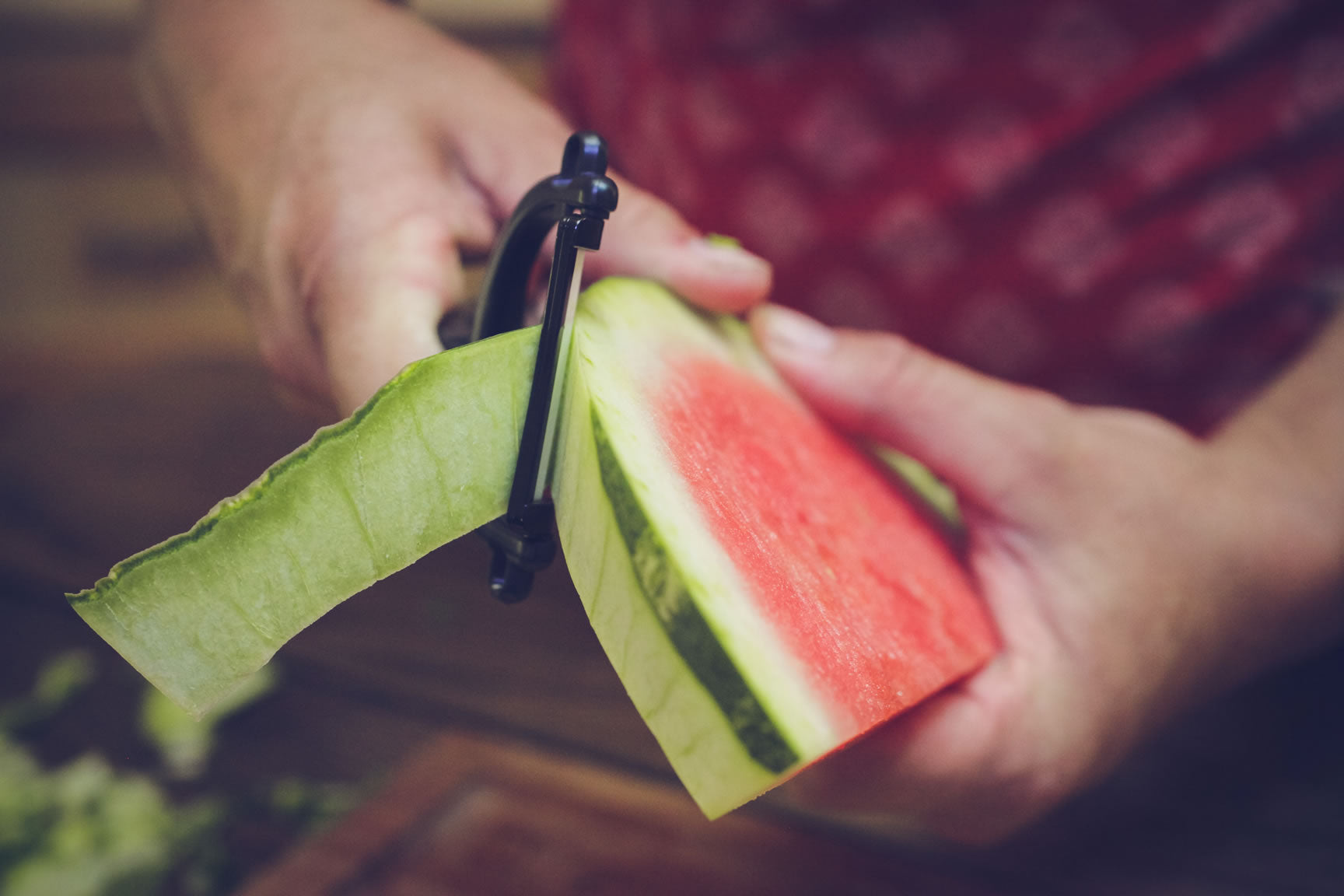
Using a sharp vegetable peeler or a paring knife, trim away all of the outer green rind.
Trim the watermelon rind into spears that will fit a pint jar.
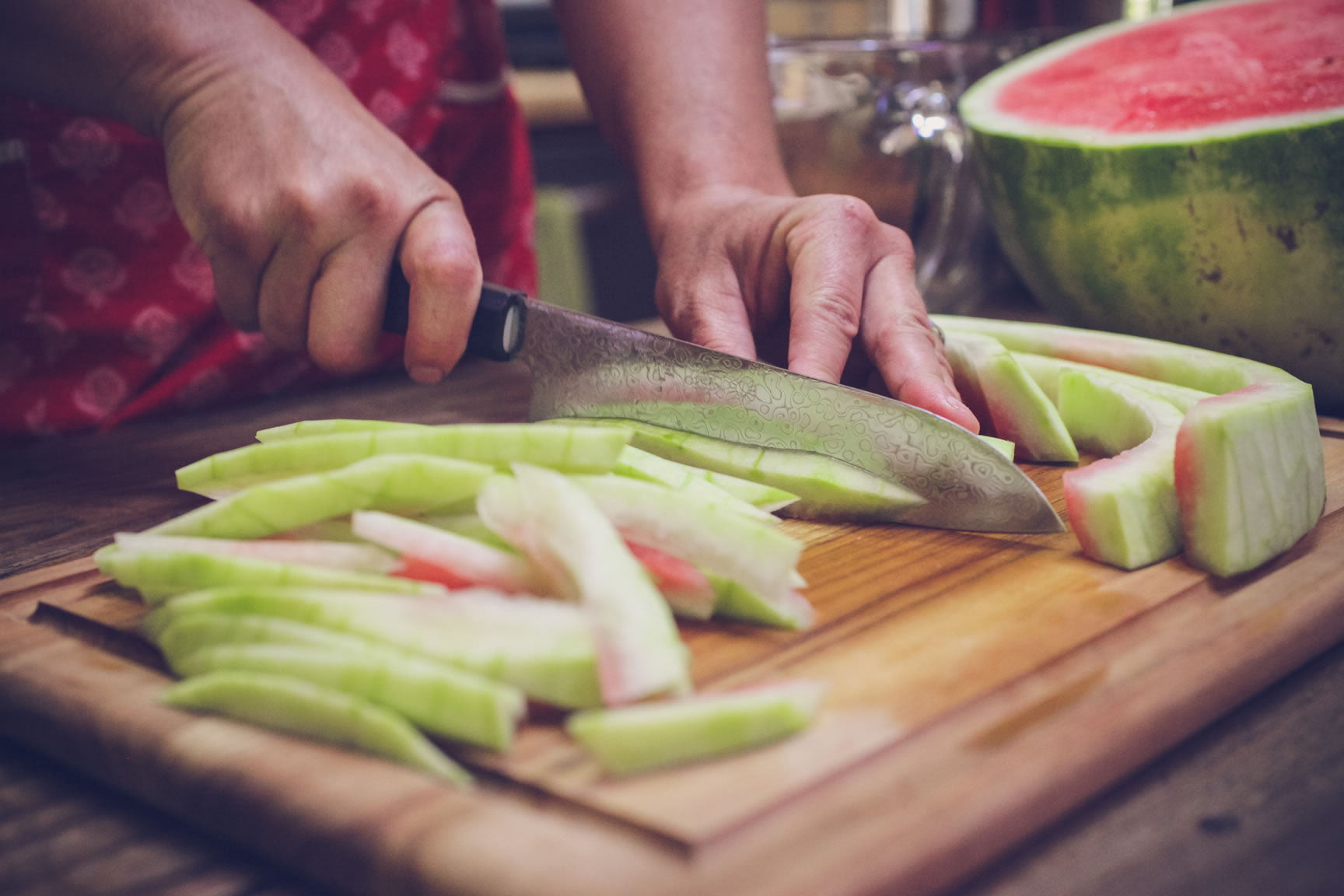
In a large, non-reactive bowl, layer the rind and salt. Toss to distribute salt evenly, then pour enough water over to cover the slices. Cover the bowl and set it in the fridge for at least 12 and up to 24 hours.
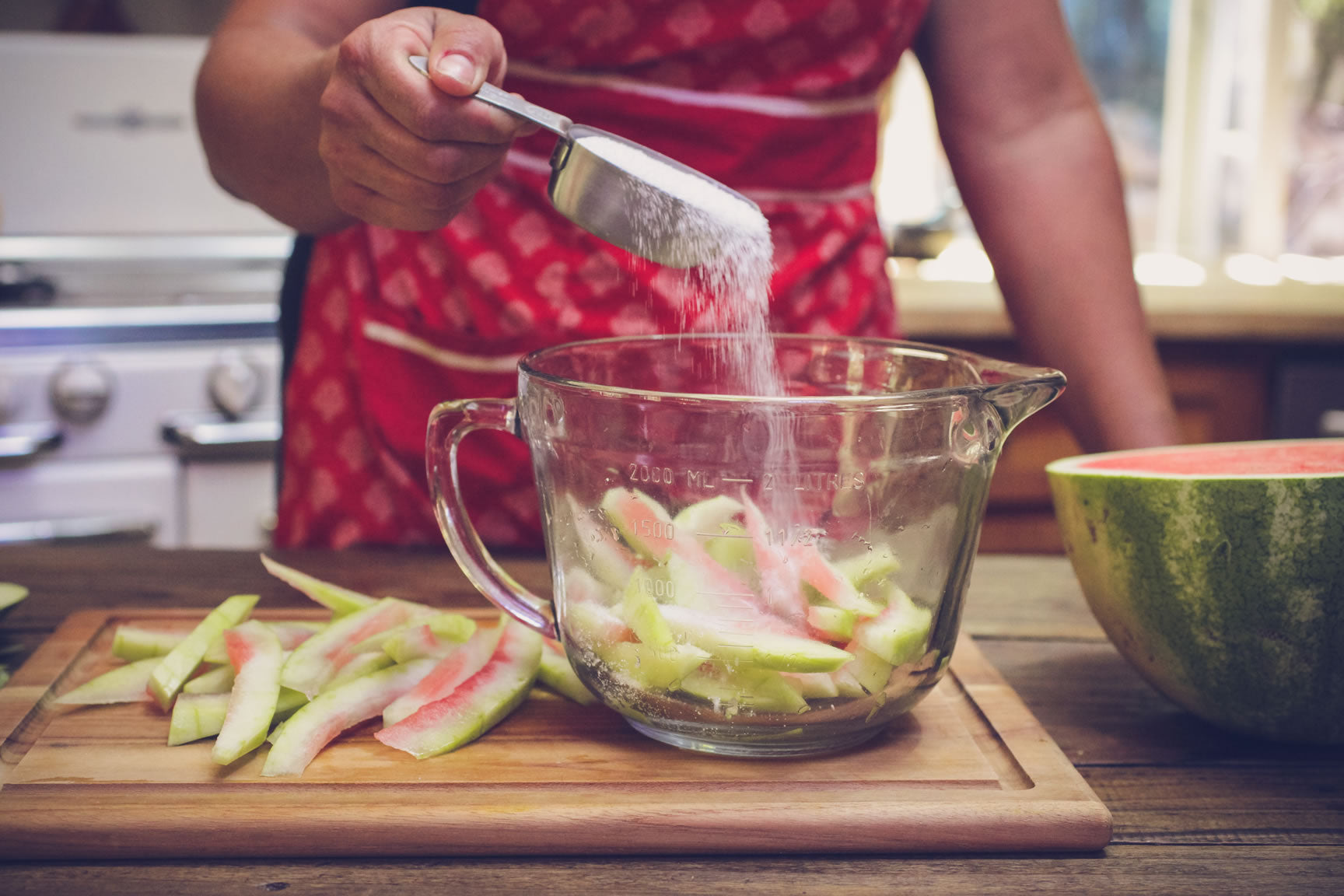
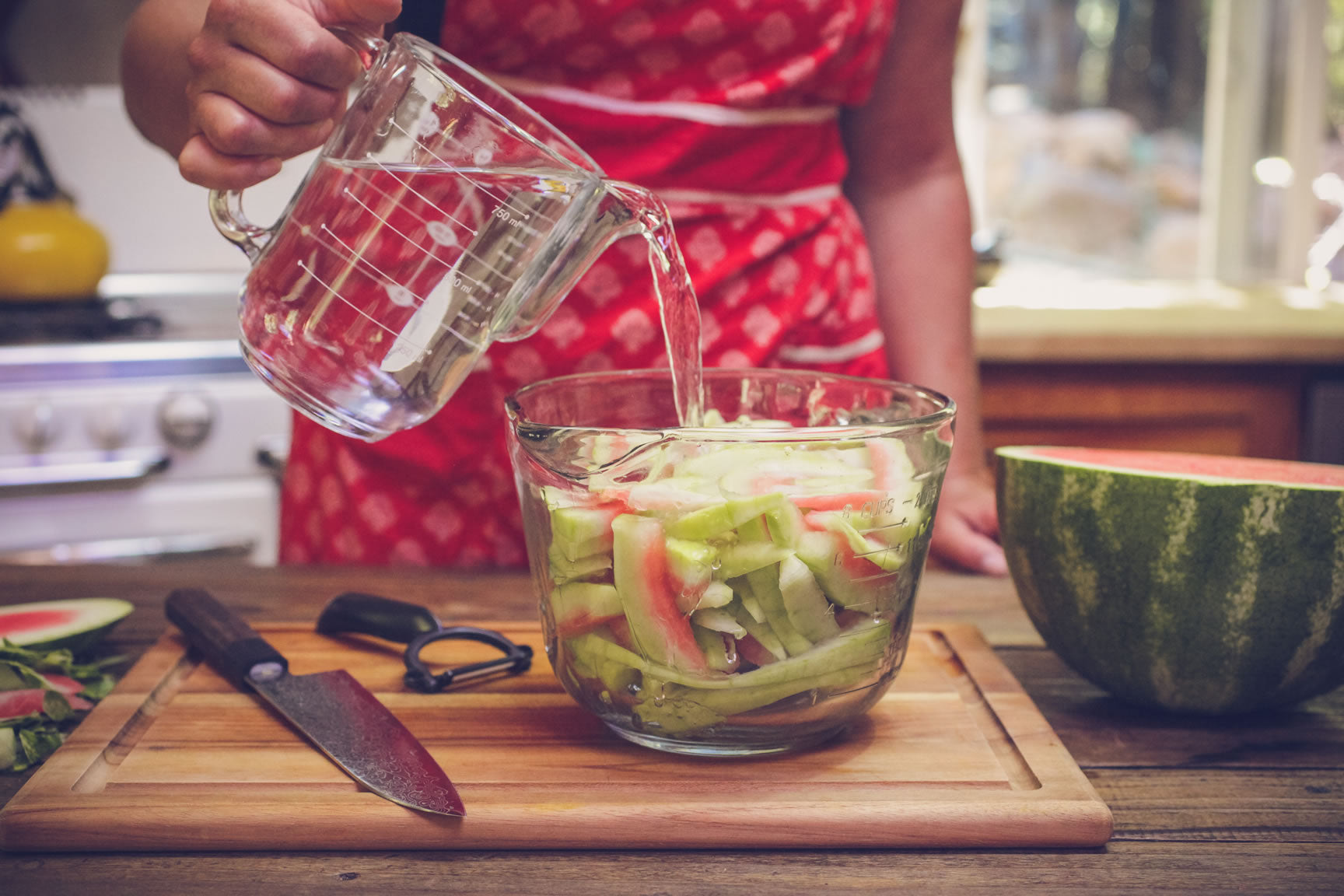
Day 2
In a colander, drain rind and rinse well. Drain again.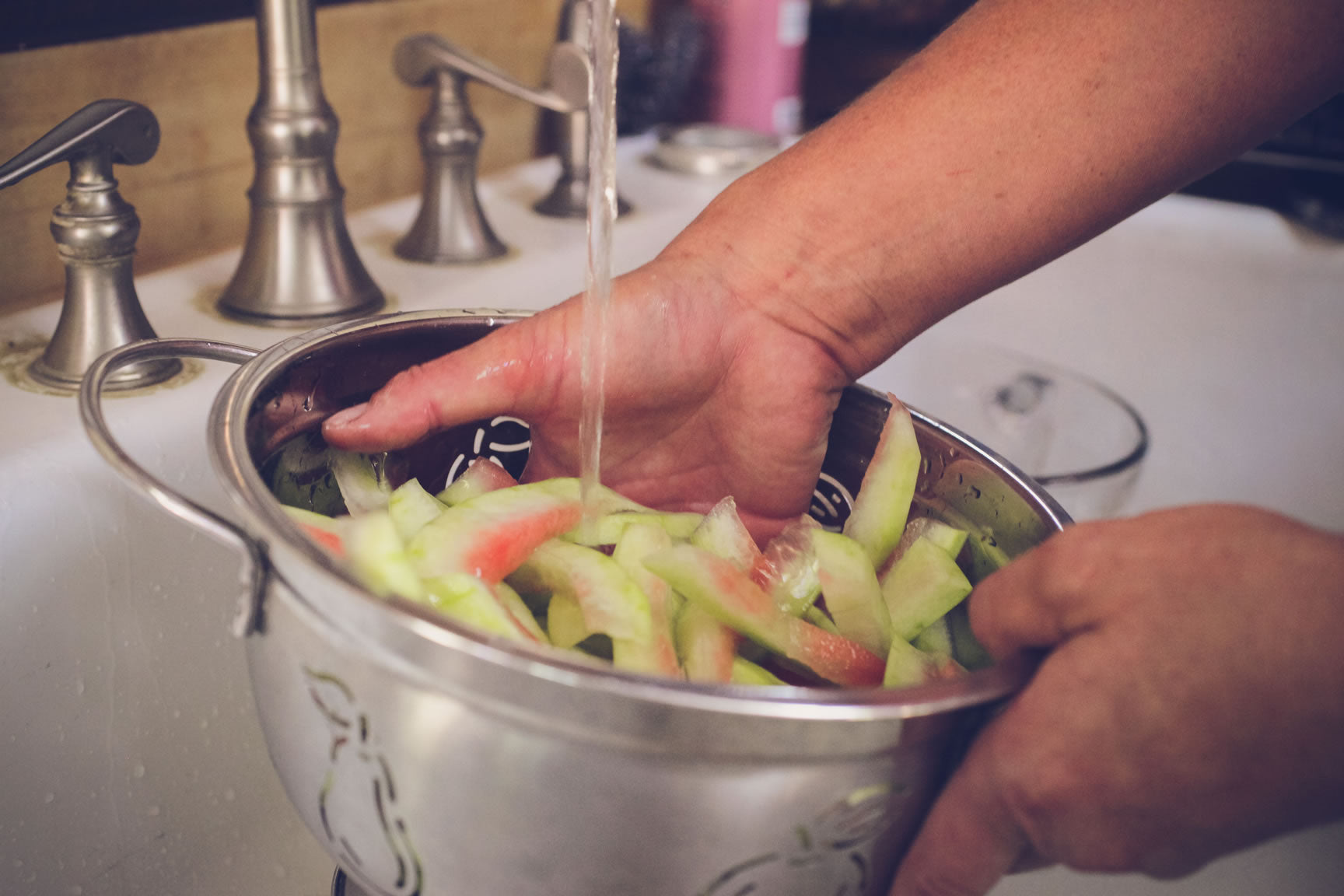
In a large pot, combine the rind with enough water to cover by 1”.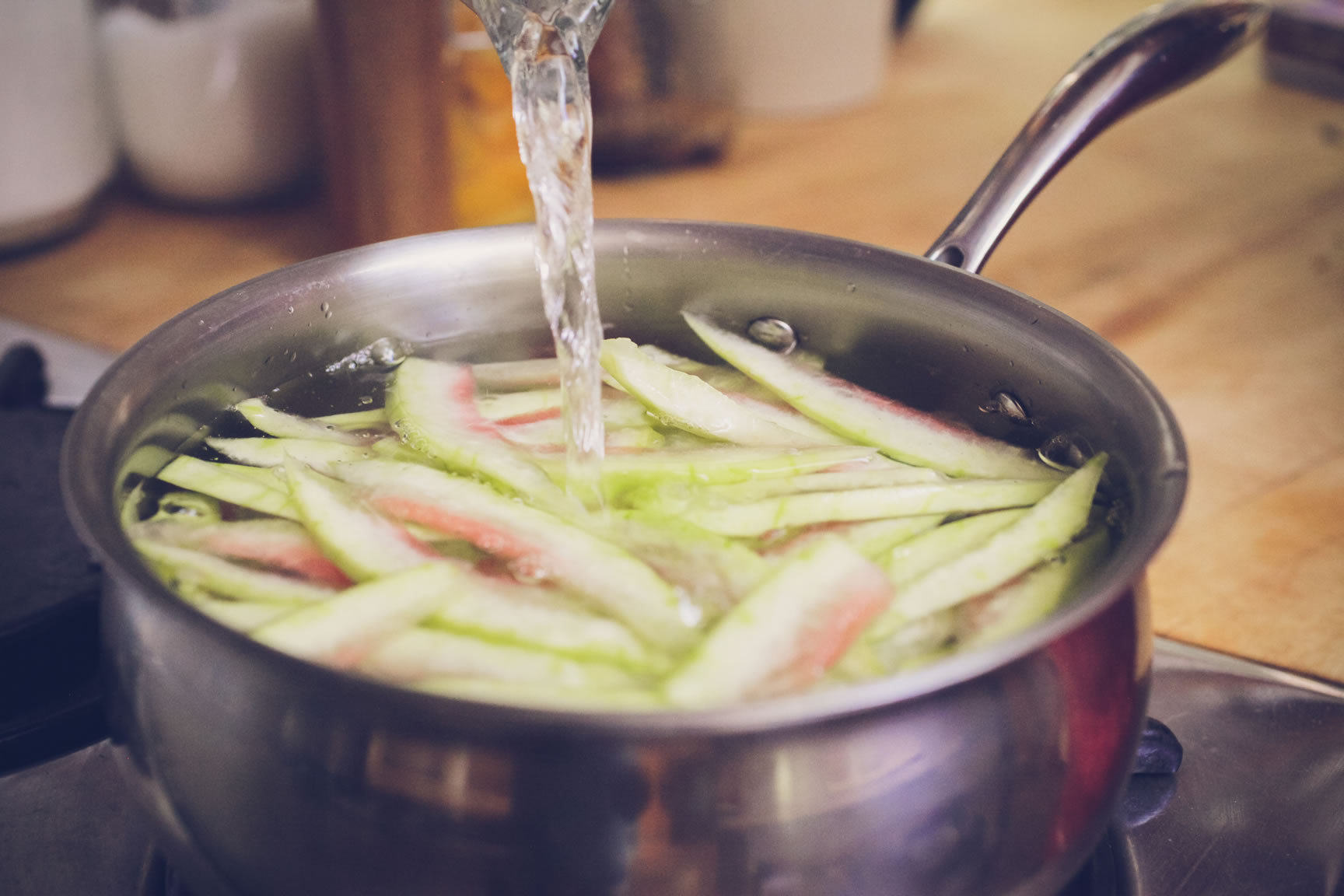
Bring to a boil over medium-high heat. Reduce the heat and boil gently until it is fork-tender, about 10 minutes.
In another pot, combine the spices, sugar, vinegar and water. 
Bring to a boil, stirring until the sugar is dissolved.
Add the drained rind slices and simmer gently, stirring occasionally, until the rind is translucent and glassy, about 45 minutes-1 hour.
Meanwhile, prepare a water-bath canner and pint jars.
Pack the rind and whole spices into jars, leaving 1” headspace.
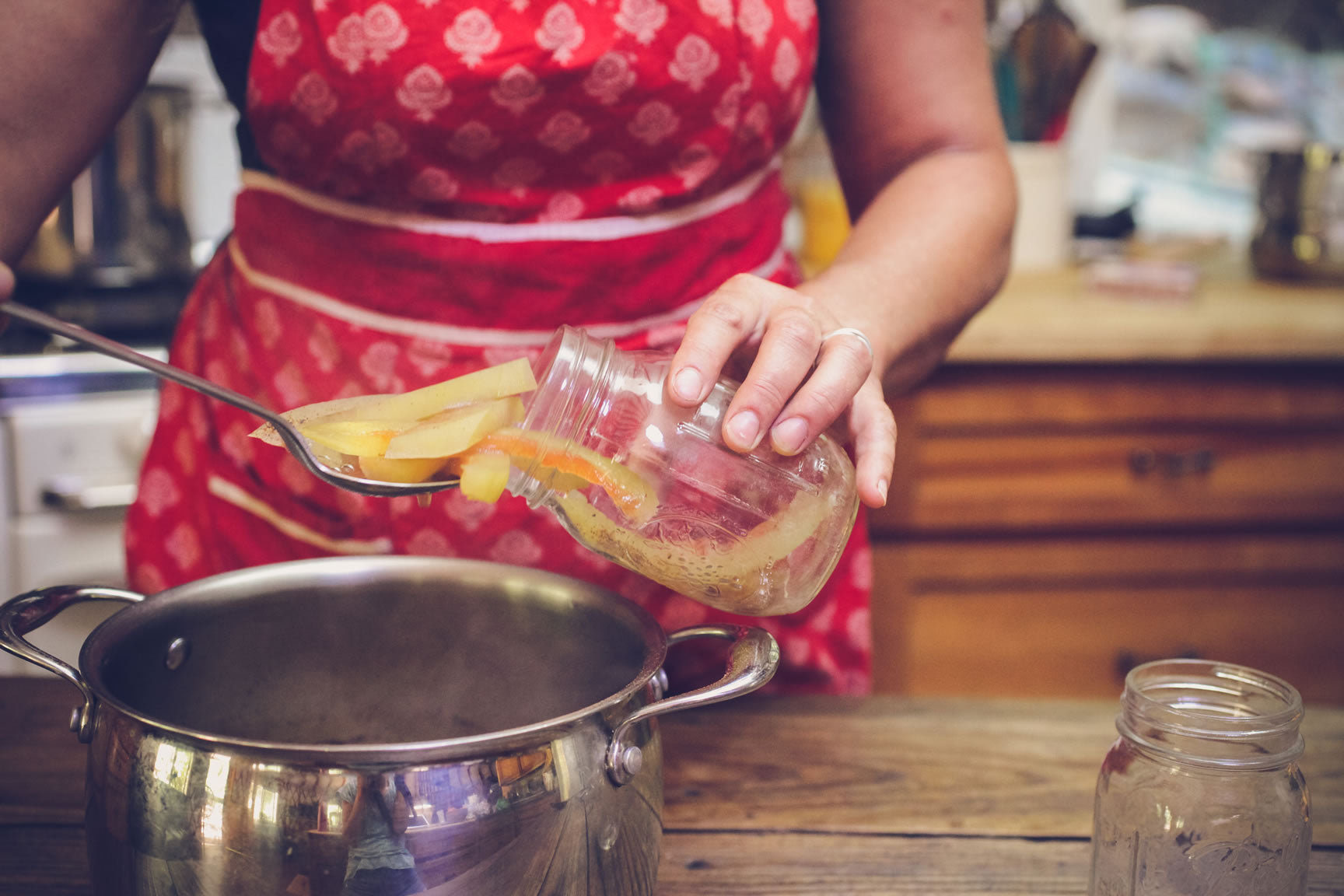
Pour in the hot pickling liquid, leaving 1/2” headspace. Remove air bubbles and adjust headspace as necessary. 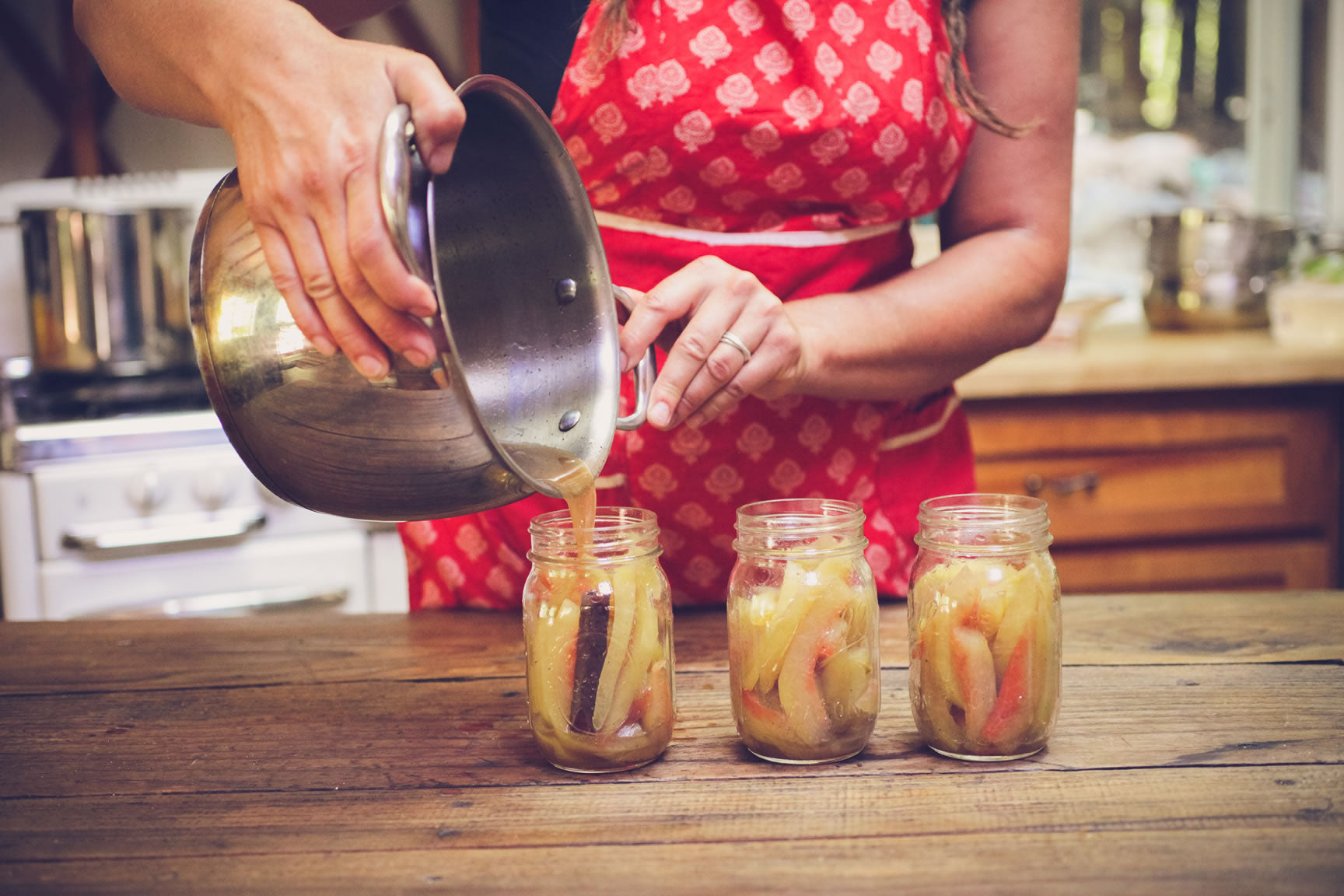 Wipe rims and secure lids onto jars hand tight.
Wipe rims and secure lids onto jars hand tight.

Process in a boiling water-bath canner for 10 minutes. Turn off heat and allow to sit in hot water for another 5 minutes. Remove the jars from the canner and set on clean towels to avoid cracking.
Let jars stand at room temperature for 24 hours, check seals, and refrigerate any that have failed to seal. Eat these within 2 weeks.
TIP: Sometimes these pickles can siphon, leaking liquid from the jar after processing. This is caused by floating fruit; the soaking step is key to help keep the rind beneath the brine. Still, if there is any leakage, assume the seal is no good, and keep the leaky jar in the fridge.
Chill before eating for best texture.
If you are not familiar with the water bath canning method watch our water bath canning video workshop. Always make sure you are following all safety guidelines outlined by the USDA when canning anything.
Over to You
It’s part of our mission here at Mountain Feed to help you make delicious, sustainable, homemade food more often. Stop by and say hello on Facebook, Twitter, Instagram or Pinterest. Or, as always, you can do it the old fashioned way and come by the store to speak with one of our in-house experts.
